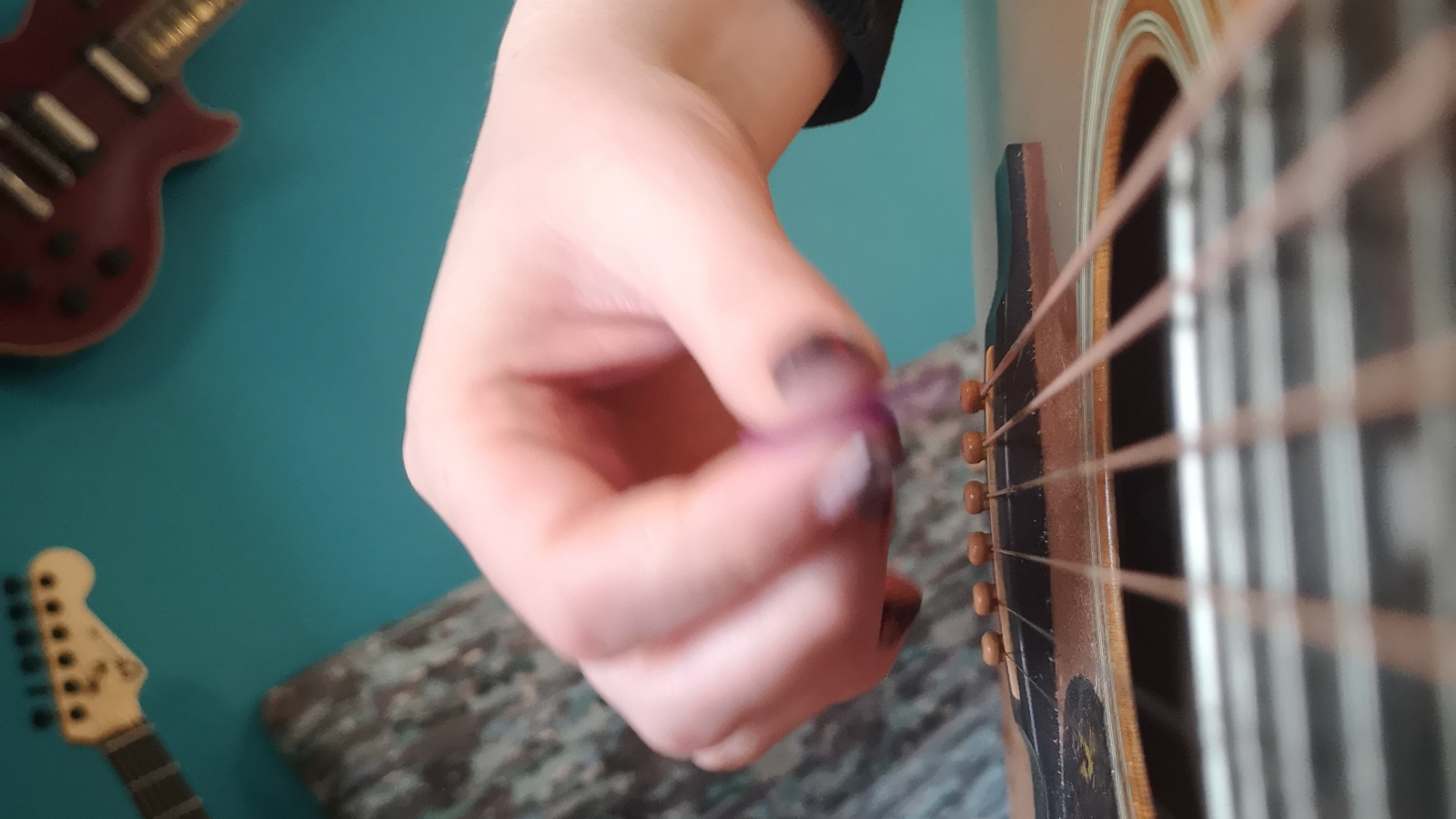How to Advance Your Hybrid-Picking Technique in Four Easy Steps
Make the most of these simple exercises and tips and you’ll have a million songs in myriad styles at your fingertips

Before we address full-on fingerstyle, let’s consider the fact that many players, especially those who play electric guitar, may never entirely give up using a pick.
For that reason, we’ll start by focusing on rudimentary chordal hybrid picking techniques that will hopefully lead players to more advanced hybrid techniques, and perhaps set some of you along the path to freedom from the plectrum altogether.
1. Start Small
For those who feel more comfortable using some sort of standard pick, try a small one. Eric Johnson influenced legions of guitarists, including me, to play in a hybrid style. Use a small pick with a pointy tip, such as Johnson’s signature Dunlop Nylon Jazz III, or one with a rounded tip, like Tommy Emmanuel’s signature D’Andrea ProPlec.
Either will facilitate a true pick pluck in tight spaces, and the small “pick print” means it will stay relatively out of the way, leaving your other fingers plenty of room to get into the mix for various plucking patterns.
Eric McFadden prefers a similar but thinner teardrop-style Dunlop Tortex pick for an edgy attack on his nylon-string.
2. Flow Your Roll
Many fingerstylists use primarily the first three fingers, but since the index finger is occupied pinching the pick along with the thumb in hybrid picking, fingers 2 and 3 become primary.
I’ve always found it slightly easier to get a consistent roll going backward – 3, 2, pick, repeat – than forward – pick, 2, 3, repeat – and therefore have to put in more work on the latter.
Here’s an elementary exercise: Form an open D chord and focus on the top three strings so that the arpeggiated chord tones are, from low to high, A, D, F#. Get a click going on a metronome. Try repeating the arpeggio up from strings three to one in time.
Then try the same in reverse. When you have this down, slow the tempo and play the notes as triplets, three to a beat.
Finally, play them up and down in 6/8 time, for which you’ll have to repeat the third note and the sixth note. The pattern is: pick, 2, 3, 3, 2, pick; repeat.
3. Get the Pinkie in the Mix
Once that’s accomplished, give the pinkie some practice time as well, because it will definitely come in handy. Try arpeggiating up and down the same open D chord, but this time pluck the fourth string with the pick, followed by fingers 2, 3 and 4 hitting strings three, two and one, respectively.
To get a flow going, try it in 6/8 time as follows: Pick the open D, pluck the A on the second string with finger 2, pluck the D on the second string with finger 3, and then pluck the F# on the top string with the pinkie.
Don’t hit that a second time; just go right back down in reverse order until you pick the open D string, and then start heading right back up. Keep repeating up and down.
Next, try working that concept using different chords with the goal of switching smoothly, in time, from chord to chord.
4. Look Ahead
Once you can do that, you’re off and running as a hybrid picker, with a million songs in myriad styles at your fingertips, all while keeping that cozy little plectrum handy for the heavy lifting on root notes, plus the infinite other groovy techniques available using a pick.
Learning to work your fingers into the mix opens up all sorts of new avenues for exploration. Hopefully, it will also inspire a desire for even more plucking-hand finger freedom.
One final thought: If you truly desire to become a full-on fingerstylist, you may as well head straight for that goal, as freeing up the thumb and first finger changes the ballgame in a major way.
On the other hand, if you’re intent on keeping at least some pick playing in your repertoire, developing solid hybrid techniques will always be in your best interest.
You may also find it useful to read this article on thumbpicking.
Get The Pick Newsletter
All the latest guitar news, interviews, lessons, reviews, deals and more, direct to your inbox!
Jimmy Leslie has been Frets editor since 2016. See many Guitar Player- and Frets-related videos on his YouTube channel, and learn about his acoustic/electric rock group at spirithustler.com.
“Write for five minutes a day. I mean, who can’t manage that?” Mike Stern's top five guitar tips include one simple fix to help you develop your personal guitar style
"It’s like you’re making a statement. And you never know where it’ll lead." Pete Thorn shares the tip that convinced Joe Satriani he was the right guitarist for the SatchVai Band










